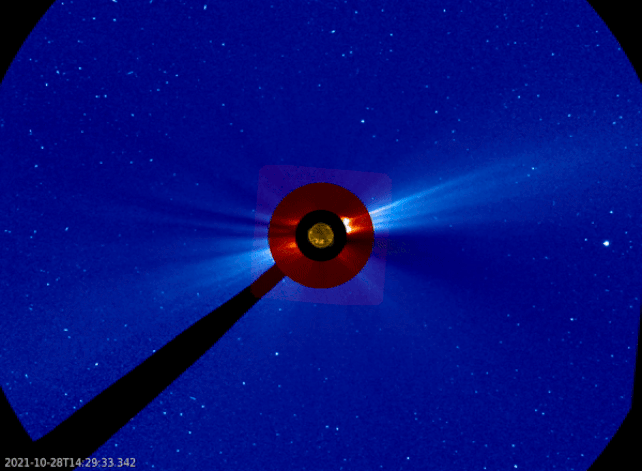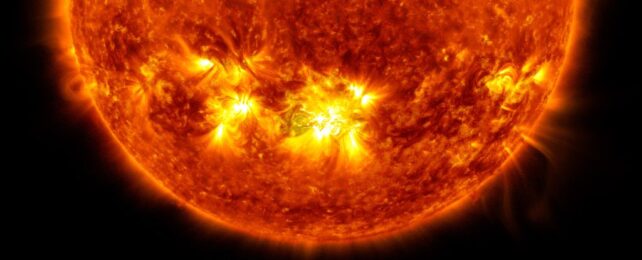An outburst that erupted from the Sun in 2021 was so violent that it was simultaneously felt on multiple Solar System bodies as it blasted through.
For the first time, instruments on Earth, the Moon, and Mars all recorded powerful solar activity, even though the planets were on opposite sides of the Sun at the time.
It's a suite of detections that can help us better understand solar activity – and assess the potential impact of that activity on space exploration efforts.
The Sun spewing radiation and particles into space is nothing new. It's kind of the Sun's whole thing. Nor are coronal mass ejections – in which the Sun ejects billions of tons of material and magnetic fields out into the Solar System – rare or particularly worrisome, mostly.
Here on Earth, our atmosphere protects us from the full brunt of the Sun's dangerous radiation.
Outside the atmosphere is another matter. Space is considered a hazardous radiation environment, and astronauts who spend time in it may have a higher risk of radiation-induced illnesses. That's just the ambient environment, too.
A dose of the particle radiation from a particularly powerful coronal mass ejection (CME) could cause radiation sickness – that's a dose of about 700 milligray – and, at a high enough level, around 10 gray, could prove fatal within a fortnight.
CMEs are capable of delivering those levels; we've just been relatively lucky so far.
Space agencies are currently planning crewed missions to the Moon and Mars, neither of which have an atmosphere sufficient to protect against solar radiation. So understanding how powerful a CME can be, and how far it can reach, is important information to have.
On 28 October, 2021, a wealth of this information landed in our laps: the Sun belched out a CME so powerful that it was detected on Earth's surface. That's extremely rare. Even rarer was our ability to measure it.

The European space Agency's ExoMars Trace Gas Orbiter, NASA's Curiosity Mars rover, the China National Space Administration's Chang'e-4 Moon lander, NASA's Lunar Reconnaissance Orbiter, and the German Aerospace Center's Eu:CROPIS Earth orbiter, and ground-based neutron monitors on Earth all detected the influx of radiation.
Earth and Mars were on opposite sides of the Sun at the time, separated by a distance of around 250 million kilometers (155 million miles); and Mars, of course, is farther from the Sun than Earth. So the detections allowed the scientists to study the way material from a CME propagates, and the effects at various points in the inner Solar System.
On Earth, the orbital dose of radiation would have been 10 milligray, but the surface amount was negligible. The Moon registered an orbital measurement of 31 milligray, and a surface measurement of 17 milligray. Meanwhile, on Mars, the orbital measurement was 9 milligray, and 0.3 milligray on the surface.
"Our calculations of the past ground level enhancement events show that on average one event every 5.5 years may have exceeded the safe dose level on the Moon if no radiation protection had been provided," says astronomer Jingnan Guo of the University of Science and Technology of China, who led the analysis.
"Understanding these events is crucial for future crewed missions to the surface of the Moon."
The good news is that, when a CME erupts, we usually have a bit of advance warning.
It takes some time after a CME is launched for the particles to arrive at Earth and beyond, between around 15-18 hours to a few days.
Knowing how CMEs propagate, and how powerfully, will better equip space explorers for battening down the hatches when a solar storm approaches.
The research has been published in Geophysical Research Letters.
